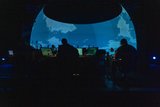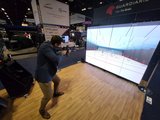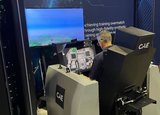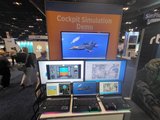Trilateral autonomous undersea warfare exercise tightens the bonds of AUKUS
HMS Tamar took part in the Integrated Battle Problem 23-3 exercise. (Photo: Crown Copyright)
In the days before this month’s Indo-Pacific Maritime exhibition in Sydney, the three AUKUS partner nations conducted a combined exercise off the east coast of Australia to test autonomous undersea warfare capabilities.
The Integrated Battle Problem 23-3 exercise saw Australian, UK and US naval personnel and assets demonstrated range of modified commercial and military autonomous systems were deployed, in conjunction with existing capabilities, in order to test trilateral undersea warfare objectives.
The Royal Australian Navy’s (RAN’s) new undersea support vessel, ADV Guidance, and the UK Royal Navy’s HMS Tamar, which is on deployment to the region.
HMS Tamar deployed a combination of divers and autonomous underwater vehicles to conduct mine-countermeasure operations and monitor critical infrastructure, including pipelines and communication cables.
Our submarines, and other military assets, will increasingly work with autonomous systems below and on the surface of the ocean to extend range and lethality.— RAN Chief of Navy, Vice Adm Mark Hammond
While much of the focus on AUKUS has been on the big change which will see Australia get nuclear-powered submarines, referred to as Pillar 1, the forces have also focused on Pillar 2, namely trilaterally developing and providing joint advanced military capabilities.
The exercise was described by RAN chief of navy Vice-Adm Mark Hammond as a practical example of Pillar 2.
‘Our submarines, and other military assets, will increasingly work with autonomous systems below and on the surface of the ocean to extend range and lethality,’ Hammond said.
‘AUKUS Pillar 2 is about delivering advanced capabilities, including through technologies that extend reach and range. As we have seen in the Ukraine conflict, scalable autonomous and semi-autonomous systems have the capacity to transform warfighting.
“These technologies originate from a range of industries, like the offshore oil and gas and communications industries. They have been modified to carry a military payload to become force multipliers, working in concert with our ships, submarines and aircraft, and to serve as a key deterrent.’
While Indo-Pacific saw BAE Systems, TKMS and Navantia jockeying to meet the RAN’s requirement for a new corvette there was also movement on the unmanned undersea front.
At the show, Saab Australia announced a new partnership with US autonomous maritime and undersea surveillance company ThayerMahan in which the two companies will explore opportunities to strengthen undersea warfare capabilities for Australia.
More from I/ITSEC 2023 | View all news
-
![US Marine Corps outlines next steps to improve synthetic training capabilities]()
US Marine Corps outlines next steps to improve synthetic training capabilities
The service has shown an interest in a range of training solutions from individual to battalion levels and plans to award multiple contracts ahead of new programmes set to run from FY2024 to FY2031.
-
![I/ITSEC 2023: VirTra debuts integration of VBS4 into its simulators]()
I/ITSEC 2023: VirTra debuts integration of VBS4 into its simulators
VirTra has unveiled the integration of VBS4 and BlueIG into its simulator systems with the aim of enhancing the capabilities of its technology for military training.
-
![I/ITSEC 2023: CymSTAR introduces CymLITE Series Deployable Air Refueling Trainer]()
I/ITSEC 2023: CymSTAR introduces CymLITE Series Deployable Air Refueling Trainer
The company has also used its platform at I/ITSEC 2023 to announce a new partnership with the Switzerland-based firm EDMS.
-
![I/ITSEC 2023: Guardiaris unveils the new generation of its Small Arms Mobile Trainer]()
I/ITSEC 2023: Guardiaris unveils the new generation of its Small Arms Mobile Trainer
SAMT, a laserless, plug-and-play mobile system, can incorporate small arms, anti-tank weapons, military vehicles and remote weapon stations.
-
I/ITSEC 2023: CAE unveils US Air Force digital F-16 cockpit
For the first time CAE exhibited a digital F-16 cockpit integrated with the Simulators Common Architecture Requirements and Standards (SCARS) marking a major step forward in training equipment virtualisation.
-
![I/ITSEC 2023: Can military forces solve integration issues in the training domain?]()
I/ITSEC 2023: Can military forces solve integration issues in the training domain?
Deploying several simulation solutions with different operating systems and programming languages has been a challenge for armed forces worldwide.



























